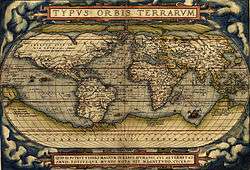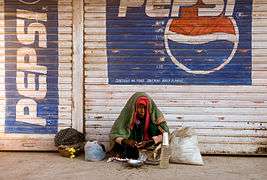Critical geography
| History of geography |
|---|
 |
Critical geography takes a critical theory (Frankfurt School) approach to the study and analysis of geography. The development of critical geography can be seen as the most recent of four major developments in the history of geography (the other three being environmental determinism, regional geography and quantitative revolution). Critical geography arose as a critique of positivism introduced by quantitative revolution.
Development
Two main schools of thought emerged from human geography and behavioral geography which made a brief comeback. Behavioural geography sought to counter the perceived tendency of quantitative geography to deal with humanity as a statistical phenomenon. It flourished briefly during the 1970s and sought to provide a greater understanding of how people perceived places and made locational decisions and sought to challenge mathematical models of society, in particular the use of econometric techniques. But the lack of a sound theoretical base left behavioural geography open to critique as merely descriptive and amounting to little more than a listing of spatial preferences.
Radical geography emerged during the 1970s and 1980s as the inadequacies of behavioralist methods became clear. It sought to counter the positivist quantitative methods with normative techniques drawn from Marxist theory: quantitative methods, it argued, were not useful unless alternatives or solutions were proposed for problems.
The final and, arguably, most successful of the three schools was humanistic geography, initially formed part of behavioural geography but fundamentally disagreed with the use of quantitative methods in assessing human behaviour and thoughts in favour of qualitative analysis. Humanistic geography used many of the techniques that the humanities use such as source analysis and the use of text and literature to try to ‘get into the mind’ of the subject(s). Furthermore, cultural geography revived due to humanistic geography and new areas of study such as feminist geography, postmodernist and poststructuralist geography began to emerge.
Critiques of critical geography
Overall, critical geography is subject to many of the same critiques as are other applications of critical theory in other subjects or disciplines. One criticism of critical geography in particular is from an article by Haverluk et al., who argue that critical geopolitics as a theoretical discourse contains several major flaws, citing critical geography and particularly critical geopolitics as unnecessarily self-marginalizing due to scholars' "intentional isolation"[1] from any perceived power structures, rendering it a small and insular field with little utility or influence outside of the academy.
Relation to other approaches in geography
Geography is a large field with a multitude of techniques and subjects of study. The prevalence of 'critical' approaches to geographic studies varies enormously. In some academic departments it is clearly the dominant mode; in others it hardly appears at all. Critical geography has clearly been on the rise over the last several decades, but it also exists more or less comfortably alongside geographers taking quantitative and empirical approaches to their work. Large gatherings of geographers, such as the AAG, typically divide sessions into streams based on methodology, with critical and quantitative geographers rarely presenting alongside one another.
However, within human geography specifically, critical geography occupies something of a hegemonic place within the discipline, with few or no truly competing academic paradigms utilizing a humanistic or qualitative methodology.
Further reading
- Critical Geographies: A Collection of Readings, Praxis (e)Press, Harald Bauder and Salvatore Engel-di Mauro (eds.)[2]
- Social Justice and the City, Ira Katznelson (Foreword), David Harvey, Blackwell Publishers, ISBN 0-631-16476-6
- "Antipode", A Radical Journal of Geography, Blackwell Publishing[3]
- ACME: An International E-Journal for Critical Geographies[4]
- Justice spatiale/Spatial Justice, a Scientific Journal centered on Spatial justice, created in 2009[5]
References
- ↑ "Browse journals by subject". Tandfonline.com. Retrieved 2016-10-25.
- ↑ "Praxis (e)Press - CRITICAL GEOGRAPHIES". Praxis-epress.org. Retrieved 2016-10-25.
- ↑ "Antipode - Wiley Online Library". Blackwellpublishing.com. Retrieved 2016-10-25.
- ↑ "ACME: An International Journal for Critical Geographies". Acme-journal.org. Retrieved 2016-10-25.
- ↑ "justice spatiale – spatial justice". Jssj.org. 2016-07-10. Retrieved 2016-10-25.
